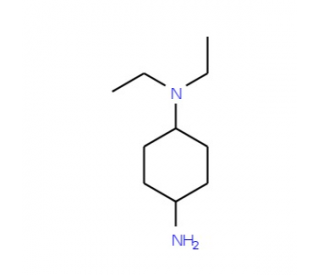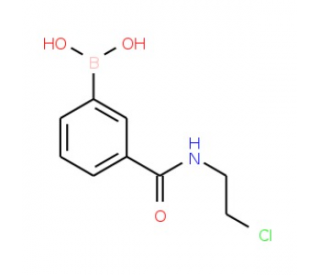详细说明
Purity
>97%, by SDS-PAGE under reducing conditions and visualized by silver stain
Endotoxin Level
<0.10 EU per 1 μg of the protein by the LAL method.
Activity
Measured by its ability to chemoattract BaF3 mouse pro‑B cells transfected with mouse CCR5. The ED 50 for this effect is 20-100 ng/mL.
Source
E. coli-derived Ser24-Lys91
Accession #
N-terminal Sequence
AnalysisSer24
Predicted Molecular Mass
7.9 kDa
Carrier Free
What does CF mean?
CF stands for Carrier Free (CF). We typically add Bovine Serum Albumin (BSA) as a carrier protein to our recombinant proteins. Adding a carrier protein enhances protein stability, increases shelf-life, and allows the recombinant protein to be stored at a more dilute concentration. The carrier free version does not contain BSA.
What formulation is right for me?
In general, we advise purchasing the recombinant protein with BSA for use in cell or tissue culture, or as an ELISA standard. In contrast, the carrier free protein is recommended for applications, in which the presence of BSA could interfere.
1010-CR/CF |
| 1010-CR |
Formulation Lyophilized from a 0.2 μm filtered solution in PBS. | Formulation Lyophilized from a 0.2 μm filtered solution in PBS with BSA as a carrier protein. | |
Reconstitution Reconstitute at 100 μg/mL in sterile PBS. | Reconstitution Reconstitute at 25 μg/mL in sterile PBS containing at least 0.1% human or bovine serum albumin. | |
Shipping The product is shipped at ambient temperature. Upon receipt, store it immediately at the temperature recommended below. | Shipping The product is shipped at ambient temperature. Upon receipt, store it immediately at the temperature recommended below. | |
Stability & Storage: Use a manual defrost freezer and avoid repeated freeze-thaw cycles.
| Stability & Storage: Use a manual defrost freezer and avoid repeated freeze-thaw cycles.
|
Background: CCL5/RANTES
CCL5, also known as RANTES (Regulated upon Activation, Normal T cell Expressed and presumably Secreted), is an 8 kDa beta -chemokine that plays a primary role in the inflammatory immune response by means of its ability to attract and activate leukocytes (1 - 3). Human and mouse RANTES exhibit cross-species activity on human and mouse cells (4). Mature cotton rat CCL5 shares 88% aa seqeuence identity with mouse and rat CCL5 and 71% - 77% with canine, feline, and human CCL5. CCL5 is secreted by many cell types at inflammatory sites, and it exerts a wide range of activities through the receptors CCR1, CCR3, CCR4, and CCR5 (5, 6). Inflammatory responses can be impaired by the sequestration of CCL5 by the cytomegalovirus protein US28 (7). In humans, CCR5 binding to CCL5 inhibits the infectivity of R5 (M-tropic) but not X4 (T-tropic) strains of HIV-1 (8). The two N-terminal residues of CCL5 can be removed by CD26/DPPIV, generating a protein that functions as a chemotaxis inhibitor and more effectively blocks M-tropic HIV-1 infection of monocytes (9). Oligomerization of CCL5 on glycosaminoglycans is required for CCR1-mediated leukocyte adhesion and activation as well as CCL5’s interaction with the chemokine CXCL4/PF4 (10 - 12). The deposition of CCL5 on activated vascular endothelial cells is crucial for monocyte adhesion to damaged vasculature, but CCL5 oligomerization is not required for the extravasation of adherent leukocytes (13 - 15). CCL5 is upregulated in breast cancer and promotes tumor progression through the attraction of proinflammatory macrophages in addition to its actions on tumor cells, stromal cells, and the vasculature (16).
References:
Schall, T.J. et al. (1990) Nature 347:669.
Bacon, K.B. et al. (1995) Science 269:1727.
Fischer, F.R. et al. (2001) J. Immunol. 167:1637.
Schall, T.J. et al. (1992) Eur. J. Immunol. 22:1477.
Appay, V. and S.L. Rowland-Jones (2001) Trends Immunol. 22:83.
Levy, J.A. (2009) J. Immunol. 182:3945.
Randolph-Habecker, J.R. et al. (2002) Cytokine 19:37.
DeVico, A.L. and Gallo, R.C. (2004) Nat. Rev. Microbiol. 2:401.
Proost, P. et al. (1998) J. Biol. Chem. 273:7222.
Appay, V. et al. (1999) J. Biol. Chem. 274:27505.
Proudfoot, A.E.I. et al. (2003) Proc. Natl. Acad. Sci. 100:1885.
von Hundelshausen, P. et al. (2005) Blood 105:924.
von Hundelshausen, P. et al. (2001) Circulation 103:1772.
Zernecke, A. et al. (2008) Arterioscler. Thromb. Vasc. Biol. 28:1897.
Baltus, T. et al. (2003) Blood 102:1985.
Soria, G. and A. Ben-Baruch (2008) Cancer Lett. 267:271.
Entrez Gene IDs:
6352 (Human); 20304 (Mouse); 403522 (Canine); 493689 (Feline)
Alternate Names:
CCL5; chemokine (C-C motif) ligand 5; D17S136Enormally T-expressed, and presumably secreted; EoCP; Eosinophil chemotactic cytokine; RANTES; SISd; SIS-delta; small inducible cytokine A5 (RANTES); small inducible cytokine subfamily A (Cys-Cys), member 5; Small-inducible cytokine A5; T cell-specific protein P228; T-cell specific protein p288; TCP228T-cell-specific protein RANTES










 粤公网安备44196802000105号
粤公网安备44196802000105号